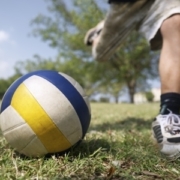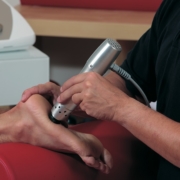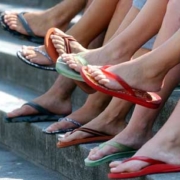End-of-Year Health Checklist
We’re here again. Can you believe we’re in the last month of 2021? It’s time to check in on those foot health goals. There’s still a little time left to make a positive change or start the new year off strong. Dr. Naghmeh Lilly Khavari of the Carrollton Foot Center offers three must-have items to add to your end-of-year checklist. The goal is to encourage you and push you closer to action. It is not too late to pursue healthy foot care habits or make adjustments for next year.
We are focusing our goals on health, habits, and hang-ups. We’ll talk about ways to improve foot health. We’ll then highlight steps to add to your routine. Lastly, we’ll draw attention to hang-ups that could get in the way of your goals.
Bring out your notebook and pen. While answering these questions, use the responses as starting points for your checklist.
Health
One of the best ways to improve your foot health is to protect your feet:
- Do you protect your feet with socks and shoes?
- Are you wearing the right size shoes?
- Do you need to learn more about living with neuropathy?
- Can you spot the signs of a foot infection?
- Do you share foot hygiene tools with others?
Habits
It’s not too early to start a new habit. Here are a few check-in questions:
- Do you wash, dry, and moisturize your feet regularly?
- Are foot inspections a part of your daily routine?
- Are you confident with toenail trimming?
- Do you frequently experience ingrown toenails?
- Is a podiatrist a part of your health team?
Hang-Ups
You may be doing more harm than good to your feet. Ask yourself these questions:
- Do you ignore changes to your feet?
- Do you push through foot and ankle pain?
- Have you missed regularly scheduled podiatry appointments?
- Do you have a condition like diabetes that impacts feet and ankles?
- Does your family have a history of toe deformities?
Now is the time to connect with our team. We’re here for you, and we want to see you end 2021 well and walk confidently into 2022.
Our board-certified podiatrist, Dr. Naghmeh Lilly Khavari, is here to help. She treats various conditions such as bunions, corns, calluses, diabetic foot conditions, ingrown toenails, plantar fasciitis, and more. We also offer advanced surgical solutions. Our team provides excellent service to patients in Denton, Dallas, and Collins counties. Contact our office at (469) 998-3668 for your foot and ankle solutions. Our office is at 4221 Medical Parkway, STE 450, in Carrollton, TX.











